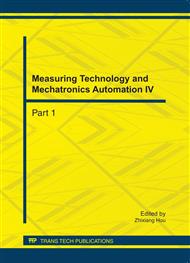p.261
p.265
p.270
p.276
p.280
p.285
p.289
p.293
p.297
Selection and Optimization in Vibration Isolation Structure of Marine Podded SSP Propulsion
Abstract:
Vibration isolation structure of Siemens-Schottel-Propulsor (SSP) is analyzed and the parameters and optimization in vibration isolation structure is computed theoretically in this paper. The choice of parameters in vibration isolation structure is an optimization process, and it is subjected to many practical constraints. From the view of the force strength, the vibration isolation materials should be “hard” while from vibration reducing effect it should be “soft”. For the double-layer vibration reducing structure, in addition to meeting the requirement of deformation and strength, the obvious stiff difference should be arranged in structure to reduce vibration. The vibration isolation structure plays the role as a transfer functions, outputs different responses according to different excitation input. The results show that the characteristics of the exciting signals should be considered in the SSP vibration isolation structure’s design, it is important to select the vibration isolation for SSP cushion materials.
Info:
Periodical:
Pages:
280-284
Citation:
Online since:
October 2011
Authors:
Price:
Сopyright:
© 2012 Trans Tech Publications Ltd. All Rights Reserved
Share:
Citation:


